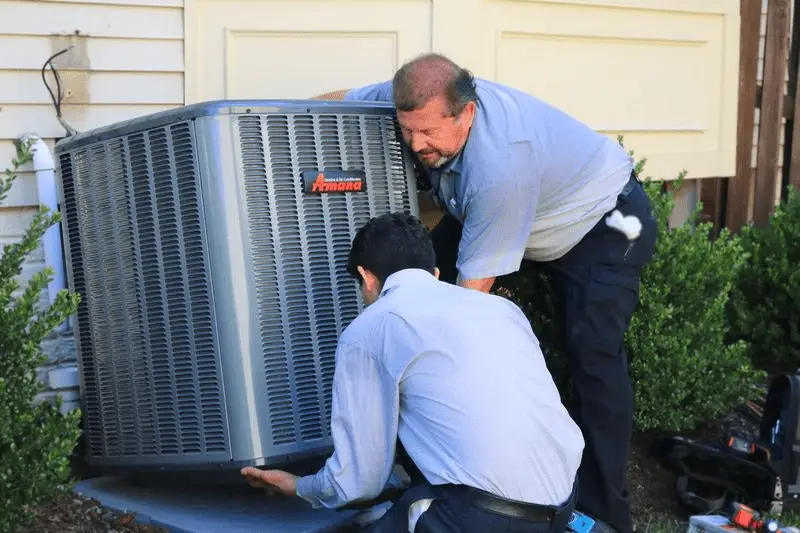Choosing the right heating, ventilation, and air conditioning (HVAC) system for a home or commercial space is a critical decision that goes beyond simply selecting a unit with high capacity. Many property owners assume that a larger system will cool or heat a space more efficiently, but this assumption can lead to numerous problems. We will explore why HVAC sizing requires careful consideration, the consequences of an oversized system, and how proper sizing contributes to enhanced comfort, improved energy efficiency, and extended system longevity.
Understanding these factors can help homeowners and facility managers make informed decisions when upgrading or installing a new HVAC system. Working with a reliable HVAC contractor in Peoria AZ ensures that a system is correctly sized, providing consistent temperatures, reduced energy consumption, and a more comfortable indoor environment throughout the year.
The Importance of Proper HVAC Sizing
-
Energy Efficiency and Operating Costs
A common misconception is that a larger HVAC system automatically cools or heats a space faster. While a larger system may reach the desired temperature quickly, it often results in short cycling, where the system turns on and off frequently. Short cycling wastes energy, increases utility bills, and places additional strain on system components. On the other hand, a properly sized system operates at a steady pace, maintaining a consistent indoor temperature with optimal energy use.
For example, an oversized air conditioner may reach the thermostat setting within minutes, but it will shut down before effectively dehumidifying the air, leaving the space feeling clammy and uncomfortable. Over time, this inefficient operation can lead to higher maintenance costs, reduced equipment lifespan, and a larger carbon footprint, which makes proper sizing essential for both financial and environmental reasons.
-
Comfort and Indoor Air Quality
Proper HVAC sizing has a direct impact on indoor comfort and air quality. An oversized system may cool or heat certain areas quickly, but it often creates temperature swings and uneven distribution throughout the space. This can result in hot or cold spots, drafty areas, and fluctuating humidity levels. In contrast, a correctly sized system maintains a steady temperature, evenly distributing conditioned air and creating a more comfortable living or working environment.
Additionally, proper sizing enables the system to operate for an extended period, allowing it to filter and circulate air effectively and thereby improving indoor air quality. Short cycles from an oversized system reduce the opportunity for air filtration, allowing dust, allergens, and other pollutants to accumulate. By considering both airflow and capacity, a correctly sized HVAC system enhances comfort and promotes healthier indoor air.
-
System Longevity and Maintenance
The lifespan of an HVAC system is closely tied to its operating patterns. Systems that are oversized tend to experience more frequent starts and stops, which places stress on key components such as compressors, motors, and fans. This constant cycling increases the likelihood of mechanical failures and reduces the unit’s overall lifespan. A properly sized system, on the other hand, operates for longer, steadier periods, minimizing wear and tear and lowering the frequency of repairs. Routine maintenance becomes more effective when a system runs at its intended capacity, ensuring components remain in good working condition. By investing in accurate sizing, property owners can reduce unexpected breakdowns, extend equipment life, and avoid unnecessary replacement costs, making the initial planning stage crucial for long-term reliability.
-
Humidity Control and Indoor Environment
Oversized HVAC systems often struggle with humidity control, which can affect both comfort and the structural integrity of a building. Air conditioning systems remove moisture from the air as they cool, a process that requires the system to run for a sufficient period. When a unit is too large, it reaches the desired temperature quickly and shuts off before adequately removing humidity. This leaves indoor spaces feeling damp and can contribute to mold growth, wood damage, and other moisture-related issues.
Properly sized systems run longer cycles, allowing them to dehumidify effectively and maintain a balanced indoor environment. This is especially important in regions with high humidity levels, where controlling moisture can prevent long-term damage and create healthier living conditions. Homeowners and managers should consider both cooling capacity and dehumidification needs when selecting an HVAC unit.
-
Cost Considerations and Investment Planning
While it may seem counterintuitive, choosing a larger HVAC system does not necessarily result in cost savings. Oversized systems often carry higher upfront costs due to increased capacity and larger components. Additionally, the inefficiencies associated with short cycling result in higher energy bills over time. Conversely, a system that is accurately sized provides predictable operating costs and delivers a more favorable return on investment. Energy-efficient operation, reduced repair frequency, and better humidity control all contribute to long-term savings.
Consulting with a professional to perform a load calculation ensures that the selected system meets the specific heating and cooling requirements of the space, avoiding unnecessary expenditure and optimizing both comfort and efficiency. By understanding the financial implications of proper sizing, property owners can make decisions that balance performance and cost effectively.
Selecting the correct HVAC system size is a critical component of creating a comfortable, efficient, and durable indoor environment. Oversizing may appear to offer quicker results, but it often leads to short cycling, inconsistent temperatures, inadequate humidity control, higher energy costs, and increased wear on equipment. Conversely, properly sized systems deliver consistent comfort, effective dehumidification, reduced utility expenses, and longer operational life. Accurate load calculations, thorough site assessments, and consideration of modern HVAC technologies ensure that a system meets the unique needs of a property.









